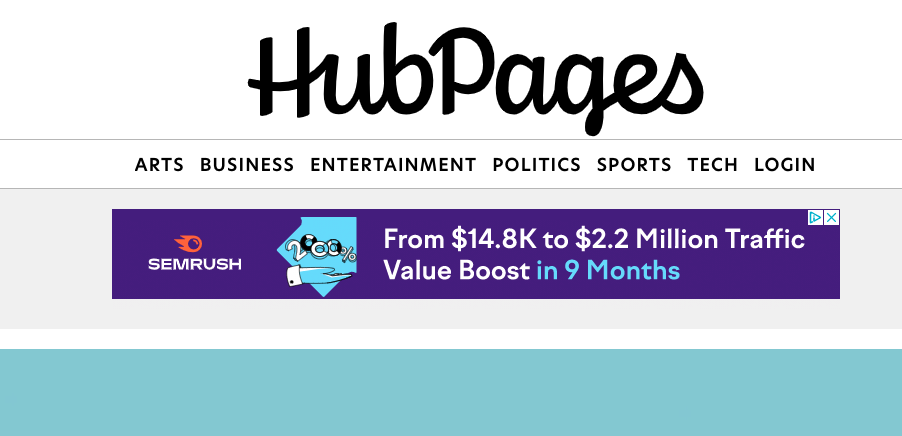Some examples of affiliate marketing strategies are blogging, video content generation, pay per click and social media strategies. A simple Facebook strategy example is to set up your profile with your offer clearly on view. Then focus on building contacts through Facebook groups.
By interacting with group members you can build connections. When people visit your profile, they see your offer. This is a strategy which takes some time and dedication, whereas if you want results more quickly you’re best off building an email list through paid marketing. See also unpaid social media marketing.
With an email list you can build a relationship with multiple subscribers through sending out automated email messages. Over time, if your subscribers are a good match for your offer, you should see sales coming in. See also the power of email marketing.
Examples Of Affiliate Marketing Strategies – Blogging
Blogging is often the go-to marketing strategy for affiliate marketers. Blogging is definitely a solid strategy. But with so many bloggers out there offering competition in most niches, is blogging worth it? Well blogging certainly does take some time and dedication. A few blog posts won’t get you massive results, or even any traffic. But a few thousand will! Blogging is therefore a longer term strategy which can be used alone, if you’re patient, or together with other marketing strategies.

Depending on your niche, blogging can take several months or even years before you get the traction you want. In competitive areas such as online money making, it will take considerably longer. But in a less competitive niche, blogging can work wonders, especially if you create a lot of content and get good at spreading the word! See also niche blogging for profit.
Examples Of Affiliate Marketing Strategies – Video Blogging
Video blogging can work in the same way as blogging on a website, only with video of course! Video bloggers upload videos to YouTube and TikTok and gain the attention of users of the platforms. If you’re aiming at the organic route with YouTube, this again can take some time.
You can also boost your visibility through YouTube by running paid advertising, alongside your organic marketing strategy. YouTube is pretty competitive, although not as much as Google search. So expect a long journey uploading videos on a regular basis for some time to gain traction with a video blog.

You can create “how to” videos or just explainer videos depending on what suits you best. Some video creators will use a split screen and share technical videos showing how to solve certain problems.
It’s a good idea to define your audience before creating your videos and targeted videos according to the type of people who will seek them out. This will allow you to attract the right audience for your affiliate products. See also how to know your target market.
With a high ticket sales funnel and lots of large value products, you can run paid advertising more easily because it’s easier to recoup your marketing budget with larger value digital affiliate products than with low value physical ones.
Examples Of Affiliate Marketing Strategies – Paid Search Traffic (PPC)
Search traffic comes from Google, Bing, Yahoo, Duckduckgo etc. These platforms also offer paid marketing. So you can target specific keywords with your adverts. So when someone types something in the search bar, your advert pops up! PPC or pay per click adverts are great for businesses because you can define your daily budget and create an advert which is very specific to a certain type of search query.

So if you’re advertising a fitness program, for example, you can use Google’s keyword planner to place ads which run only when certain keywords are typed into the search engines. “fitness program for sale”, for example would make a good keyword for your ad in this scenario.
When someone clicks on your advert, you pay a fee according to the cost of the specific keywords you are targeting. Some keywords will cost more than others but it’s important to use keywords which are more likely to bring in paying customers, not casual browsers!
If you’re paying for adverts as an affiliate, it’s a good idea to send traffic to a landing page where you can collect their email address. This gives you a longer period of time to build trust with your visitor and offer them value. When they trust you they are more likely to make a buying decision.
Email Marketing
With an email list, affiliates can connect with thousands of subscribers through an automated email marketing system – access one here. Affiliates build their lists through sending qualified website visitors to landing pages and collecting their emails. Here’s an example of a landing page:

A landing page offers something of value to the person landing on it. The visitors have two choices, either sign up for the offer or leave the website. With a blog type of website there’s many more choices to make, so it’s more difficult getting visitors to sign up to a list from a blog/website. So landing pages are better for converting website visitors into email subscribers. See the power of email marketing.
Social Media Marketing
Social media sites such as Twitter, Linkedin, Facebook and Instagram are just a few of the ones which are used for advertising affiliate products. Many affiliates use these sites to post content which they created through blogging or video marketing.
As an affiliate your social media sites offer a good way to get your content in front of more people and help you build an online presence. Social media interaction can also help with your SEO – search engine optimisation, and get you seen more in the search engine rankings. See social media unpaid marketing.
Any single platform can be used alone for marketing of affiliate products. It’s advisable to learn a single strategy before moving on to another one. Trying too many too quickly will likely mean you spread yourself too thin!
Quora.com – The Question & Answer Site
Quora.com is a great site for affiliate marketers because it can allow them to gain greater exposure by answering (and asking) questions. A well answered question can garner a lot of views and even go viral. So it’s another example of an affiliate marketing strategy which can work well if you stick at it for some time. By answering multiple questions within your niche, you can link to blog or video content you have created which helps answer the questions.
You can’t paste affiliate links directly on the site though. This will likely get your answers deleted and your account shut down. But if you provide some value in your answers, and link to relevant content, this can be a good long term strategy.

As you answer content “bank” builds up, you should find others sharing your answers too, so this can compound over time. People will start visiting your content from Quora if you do this for long enough. You can also put a link in your bio to a website you own, which can be an affiliate website. See also affiliate marketing on Quora.
Free Blogging Sites
Some affiliates use free blogging sites to keep their costs down. Sites like Blogger.com and Hubpages.com allow blogging on their site completely free. If you create enough content, this can help you connect affiliate products with your audience.
Free blog sites tend to have less authority with the search engines however, and this strategy can take a lot of hard work before you see much in the way of results. But if you keep at it, it can eventually pay off with the right content and products.

One of my very first affiliate sales came from blogging on Hubpages.com. I write a review article of a web building product I had bought. It made a single sale but I was super excited at the time!